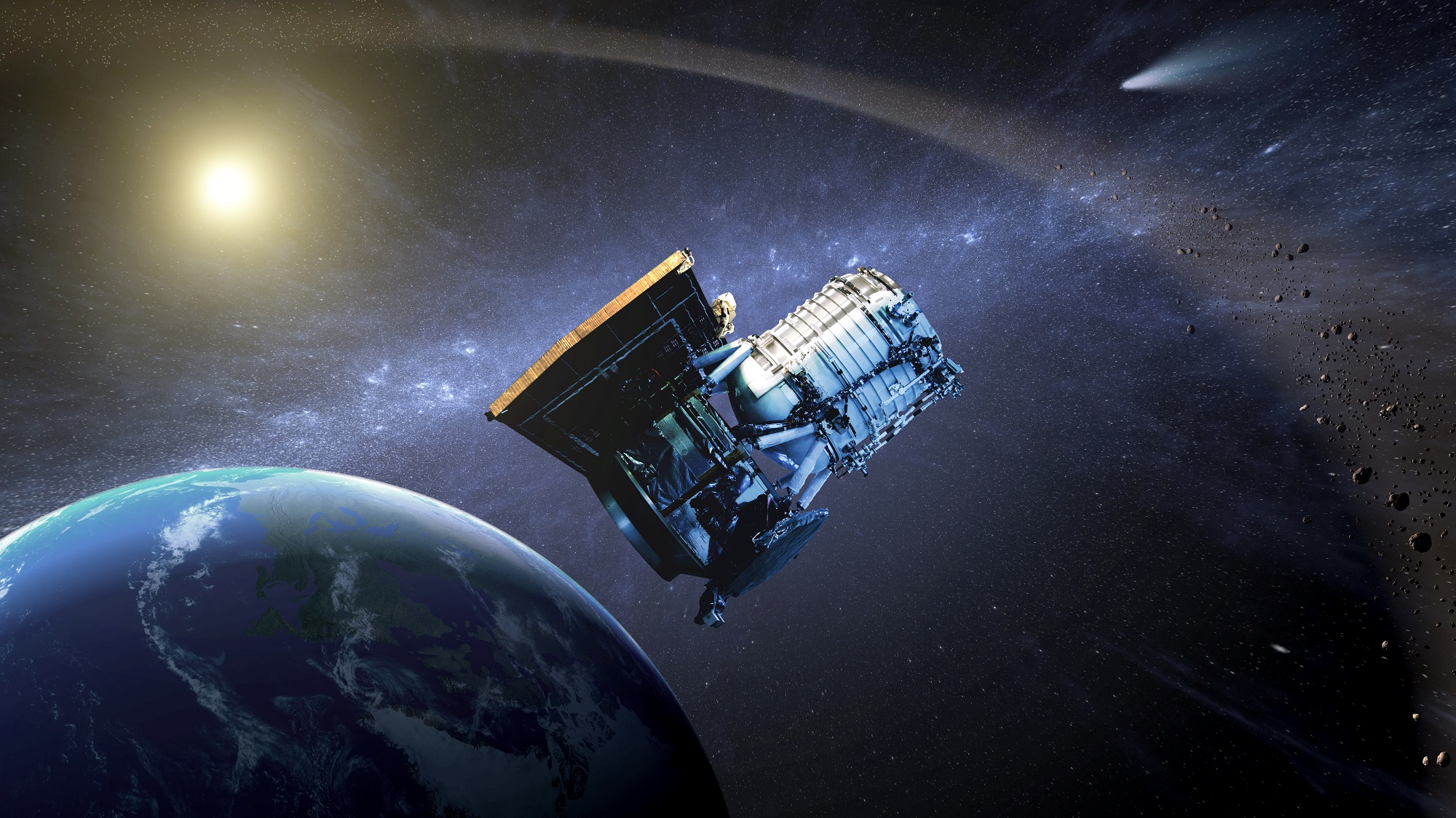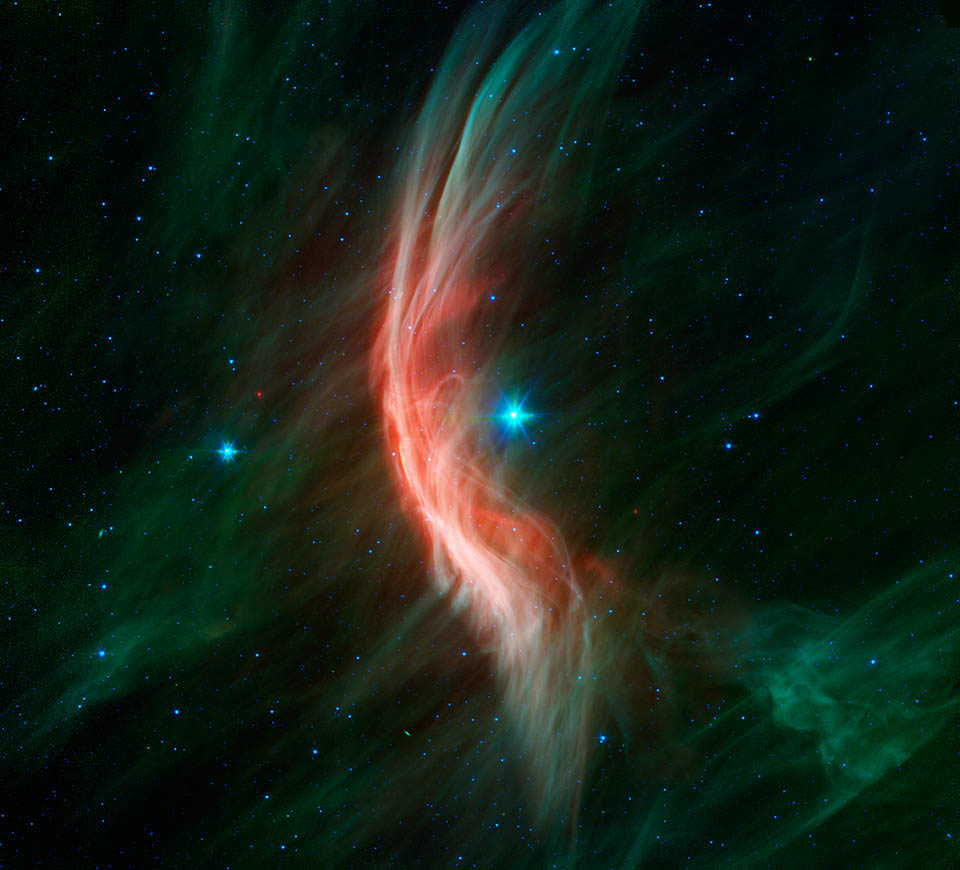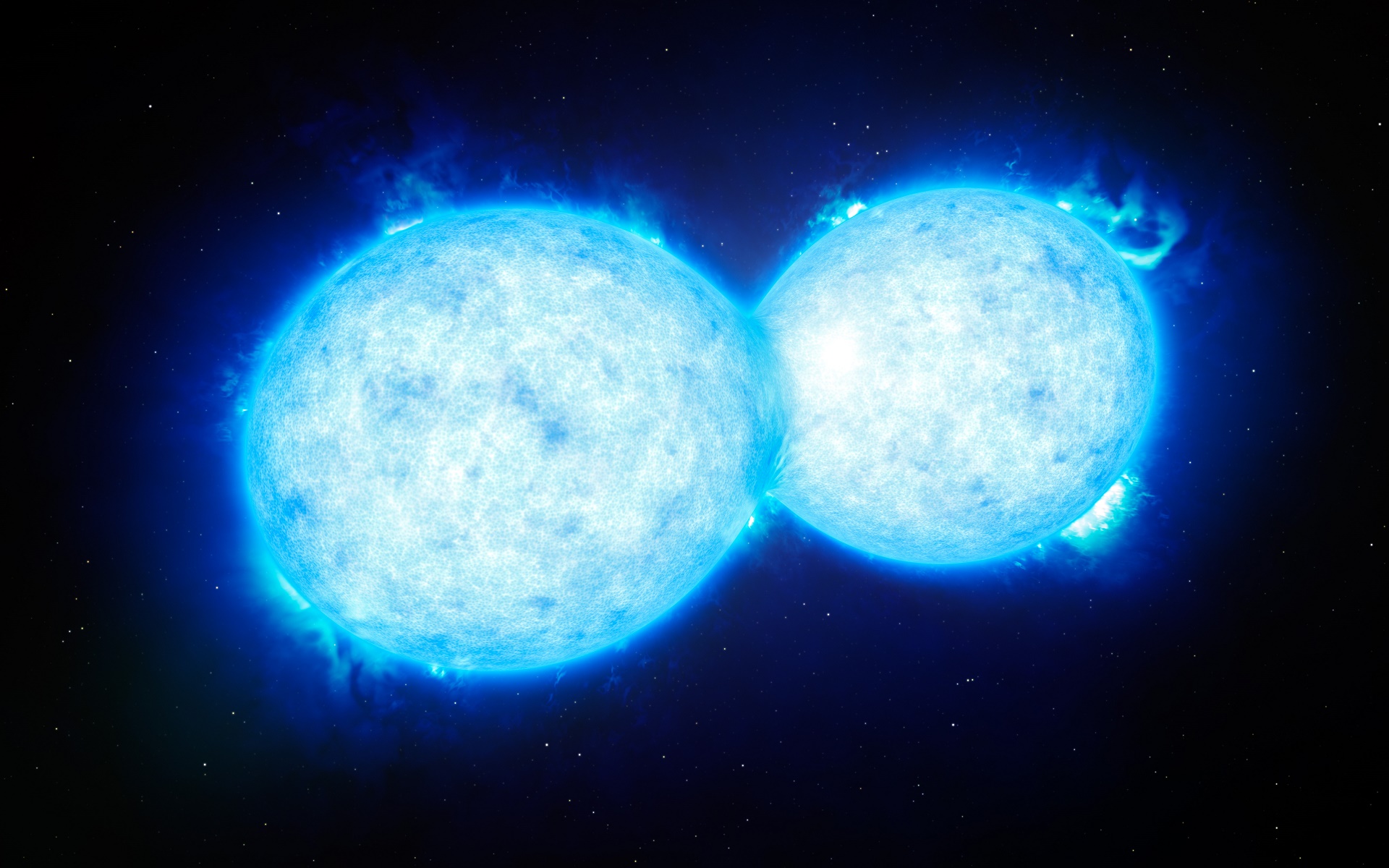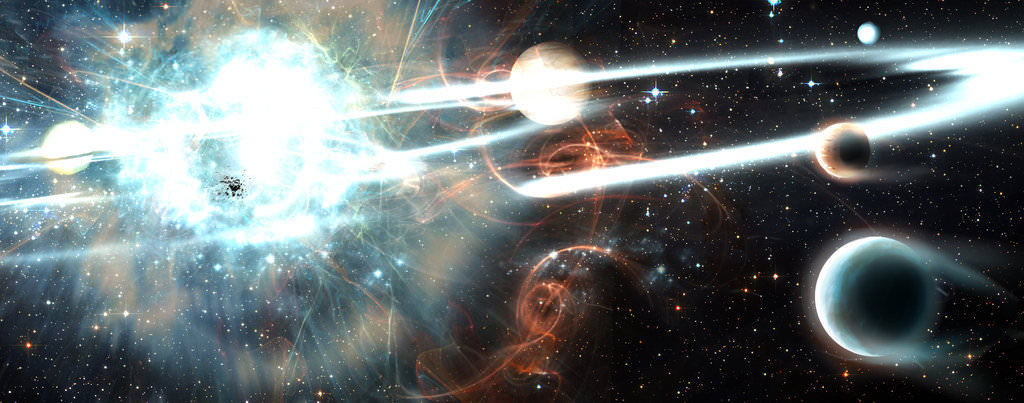Our universe is capable of some truly frightening scenarios, and in this case we have an apparent tragedy: two stars, lifelong companions, decide to move away from the Milky Way galaxy together. But after millions of years of adventure into intergalactic space, one star murders and consumes the other. It now continues its journey through the universe alone, much brighter than before, surrounded by a shell of leftover remnants.
At least, we think. All we have to go on right now is a crime scene.
Let’s investigate.
The Case of the Too-Young Star
The star’s name is unassuming enough, if a bit obscure: CPD 64°2731. And at first glance it’s not particularly strange, with a mass somewhere around forty times that of the sun. But its circumstances are downright bizarre. It’s moving incredibly fast, topping out at a blazing 160 kilometers per second. It’s well outside the Milky Way galaxy, positioned about 25,000 lightyears away from us and about 2,000 lightyears above the galactic disk. And it’s spinning insanely rapidly, upwards of 300 kilometers per second (compared to the relatively sedate speed of 2 kilometers per second for the sun).
It gets worse. Recent observations by a team using the Wide-field Infrared Survey Explorer paint the portrait of a thin, horseshoe-shaped shell of gas and dust surrounding this radical star, with the shell itself lit by the intense radiation blasting from the stellar surface.

And here’s the strangest part. Assuming the star was born somewhere within the disk of the Milky Way (a pretty safe bet), it would’ve taken about six million years to reach its current position outside the galaxy. But a star with that size, mass, and temperature should only be about three million years old.
Something doesn’t add up.
Kicked out of Town
Something chased CPD 64°2731 out of the galaxy, and it was probably its closest friends and neighbors. Stars tend to be born in clumps and clusters, from a few dozen to a few hundred popping out of the same molecular cloud. In most cases, those stars will just gently drift further apart as an open cluster, becoming more independent as they age.
But chance encounters can spin things around from that serene expansion. When three or more stars of comparable mass get close to each other, their gravitational interactions become incredibly unstable. In some cases, they just slightly alter their trajectory but otherwise remain unaffected. In others, they capture each other and form long-term orbits. But every once in awhile the energies add up in exactly the wrong way, sending one or more stars completely flying away at ludicrous speeds.

This is how so-called “runaway stars” get their boosts, and once they get going there’s nothing holding them back. In many cases, they set themselves up on an escape trajectory from the galaxy altogether, as in the case of our enigmatic friend, CPD 64°2731.
And in situations where stars are born close enough together to become runaways, many of those stars happen to be binary systems.
Ah, a clue.
The Companion-Killer
Sometimes stars eat their companions. If one of the pair gets too close, the more massive one will suck down gas from its neighboring atmosphere like a stellar vampire. And as you might imagine, once this scenario starts to play out it usually doesn’t end well – stars don’t take very kindly to destabilizing their atmospheres. Flares, eruptions, and temper-tantrums ensue.
In the worst case scenarios, the pair becomes so destabilized that their orbits shrink and shrink, eventually merging the stars together in a horrific – and fatal – embrace. Needless to say, this process releases a tremendous amount of energy, capable of blowing multiple suns-worth of material out into the surrounding space as a gigantic nebula.

The newly-combined star (if it survives at all), completely changes character. It will now be spinning rapidly from the absorption of all that juicy angular momentum from its once-orbiting companion. It also now has a fresh supply of raw fuel, thanks to its unlucky host, and a big boost in mass, increasing its fusion rate and radiation output. And that pumped-up radiation output lights up the surrounding nebula like a neon sign.
The end result of such a fantastic collision? A single giant star, spinning fast, reset and reborn in youth, surrounded by the remnants of the violent encounter with its twin.
And in this case, as best surmised in a recent paper, a treacherous star high-tailing it out of its home galaxy, free but forever a fugitive.
Read more: “CPD-64 2731: a massive spun-up and rejuvenated high-velocity runaway star“, accepted for publication in the Monthly Notices of the Royal Astronomical Society

